#pinnipedia
Text




Leopard seals are pagophilic mammals, meaning they prefer to live on or near sea ice and depend on it for many activities and functions.
©
5K notes
·
View notes
Text

A leopard seal (Hydrurga leptonyx) emerges from the kelp on Bird Island, South Georgia
by Derren Fox
#leopard seal#hydrurga leptonyx#seals#pinnipeds#hydrurga#phocidae#pinnipedia#carnivora#mammalia#chordata#wildlife: south georgia#wildlife: antarctica
12K notes
·
View notes
Text

Bearded Seal
19 notes
·
View notes
Text


A Do Not Feed sign for the Munich Zoo's South American sea lions and a sea lion study page. 🦭
17 notes
·
View notes
Text


That's right followers, the Tumblr Pinniped Contest is here! 34 extant species, a randomly generated bracket, and a contest for the ages. Only one will wear the crown of Tumblr's favorite pinniped! Polls will be posted every day (approximately, be nice I'm on painkillers).
As you can see because we don't have an easily divisible number of species we will be starting out with a mini round.
Round 1:
Walrus vs Antarctic fur seal
Brown fur seal vs Galapagos fur seal
New Zealand fur seal vs Guadalupe fur seal
South American fur seal vs Subantarctic fur seal
82 notes
·
View notes
Text
I just learned about the Caspian Seal and I was perplexed. Like the Baikal Seal, it is landlocked, and makes you wonder "how did they get there?"
Well, I did some light research and here's what I discovered! The earliest distinct pinniped fossil dates back to the Oligocene epoch, about 33-23 million years ago. At this stage in Earth's natural history, what we now call the Mediterranean Sea was far more expansive.
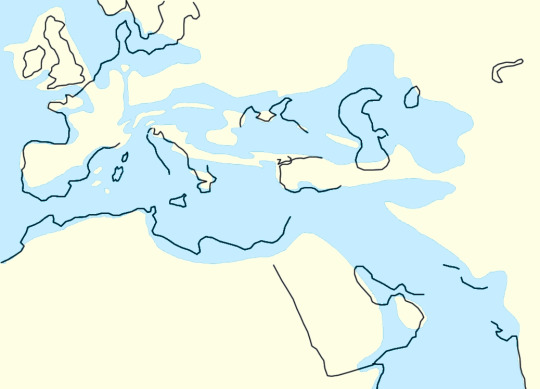
In the image, you can see the outline of the Caspian Sea. It stands to reason that early pinnipeds occupying this area became closed in over time. Not too complicated, but still interesting!
I wonder how these seals are faring, considering the poor state of the Caspian Sea these days.
I heard somewhere that pinnipeds were more closely related to ursinids than canids, but did you know that their closest relatives are actually mustelids? fascinating.
#eukarya#animalia#chordates#mammalia#carnivora#pinnipedia#phocidae#pusa caspica#caspian seal#caspian sea
11 notes
·
View notes
Text
pinnipedia-art
welcome!
my art / socials are always “pinnipedia” “pinnipedia art”
i draw fanart sometimes, but i try to focus more on my ocs. i am a huge furry so if you dont like that u can just leave lol. if you’re blocked you make me uncomfortable
enjoy my art! any like, comment reblog is super appreciated!
here’s a FAQ/more info
1. what programs do i use? i use easy paint tool sai ver 1.1.0
2. what do i draw with? i currently use a gaomon screen tablet! anything before 2022 was with a wacom intuos draw
3. how long have i been drawing and how did i learn? since i was 9 years old, and i am always learning (self taught) i have no clue what im doing
4. what are your brush settings? ask me for ‘em cus it changes
5. can i give you a critique without asking even if i do it in the tags? no, please don’t say a thing. if you don’t like it i don’t care. i don’t want any critiques because i do this for fun!!!
#tags for mobile#jojo#jjba#weathertaro#pinnipedia#pinnipedia ocs#pinnipedia art#u dont have to like if u read this but it is nice (:
21 notes
·
View notes
Text
Caniformia
The Caniformia is a suborder is classified in the order Carnivora. They include dogs, bears, raccoons, mustelids, and the clade Pinnipedia. There are 9 extant families and 3 extinct families.

1 note
·
View note
Photo
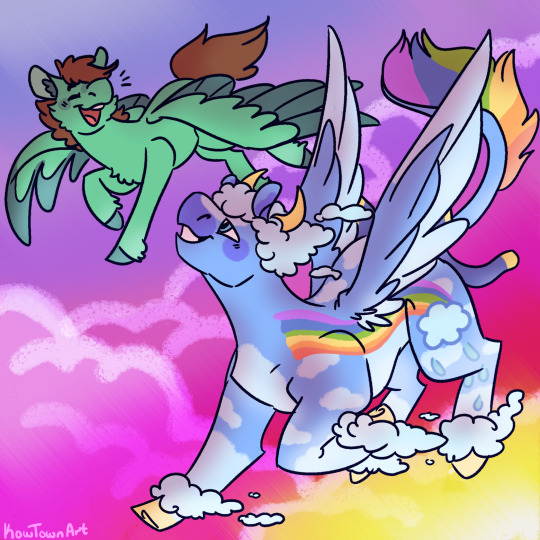
Art Fight piece for @pinnipedia-art ! With their character, Bluemarine! He was just way too cute to not draw! I absolutely adore his design! :D
#pinnipedia-art#art fight#Bluemarine#mlp#my little pony#Swift Skein#mlp oc#art fight 2022#my art#Kowtownart
20 notes
·
View notes
Text

Behold the Selkidomus (mega pinnipedia), a large mammal that lurks the depths of the boiling sea. They are sought after for their thick, warm, water-proof pelt which shimmers like silver in the moonlight. The long hairs on their backs mimic the appearance of kelp of seaweed, an evolutionary tactic developed to protect them from predators that hunt at higher depths. Similarly to modern tarantulas, they can shed some of the hairs on their undersides that will cause irritation and possibly bleeding. Their diet consists of mainly cephalopods but they will ingest crustaceans if necessary.
Decided to take a more realistic approach to TOH creatures. This isn’t meant to be ‘better’ than the cartoon in any way, it’s just to have fun with biology and a series I hold close to my heart. So don’t come at me pls I love cartoons as much as you do😭
I am not claiming these creatures to be of my own creation, these are just my own headcanons.

#the owl house#toh#toh au#toh fanart#the owl house fanart#Selkidomus#the boiling isles beastiary#my art
166 notes
·
View notes
Text

A leopard seal (Hydrurga leptonyx) amongst the seaweed on Moto Ihupuku, Aotearoa
by Russell Scott
#leopard seal#seals#pinnipeds#hydrurga leptonyx#hydrurga#phocidae#pinnipedia#carnivora#mammalia#chordata#wildlife: aotearoa
883 notes
·
View notes
Text



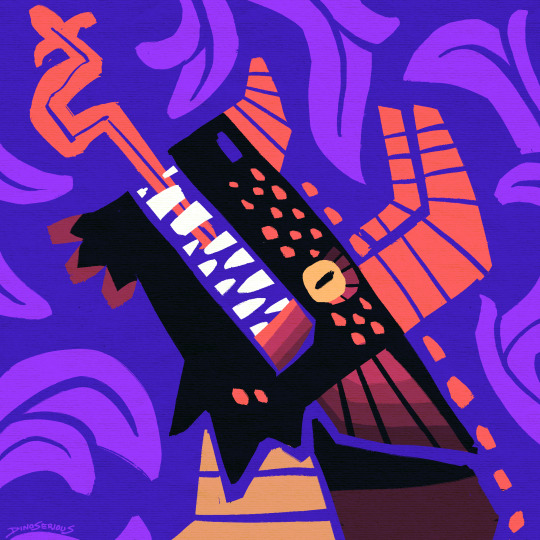




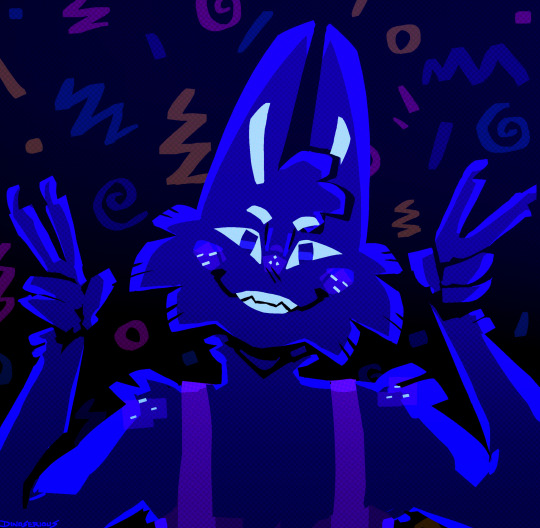
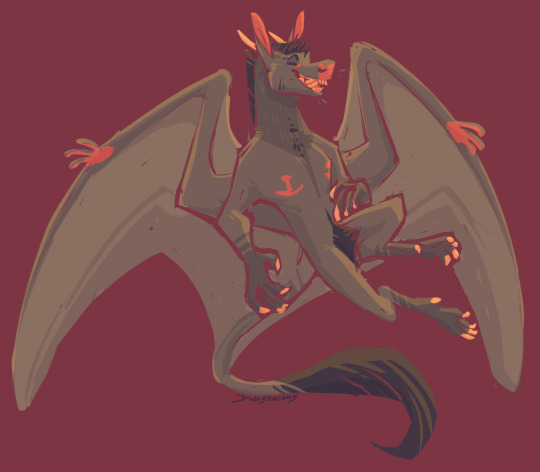
next af batch, charas are @bowelfly, Fazledazzle, @pinnipedia-art, @astralgastropod, @perilarts, @frootdragon (ft my own archeops), @funkehouse, Kiroc, @jaspersketch, and @bucephaly :>
274 notes
·
View notes
Note
hi what is a seal
this is actually a great question! a true seal, or earless seal, belongs to a group of marine mammals known as pinnipeds, which is Latin for "flipper-footed!" there are three families in the Pinnipedia order: Odobenodae (walruses), Otariidae (sea lions and fur seals) and Phocidae (true seals).
true seals are often confused with sea lions or fur seals, but there are actually several traits that make them unique! take a look at these photos of a harbor seal (left) and a California sea lion (right). what differences do you notice?
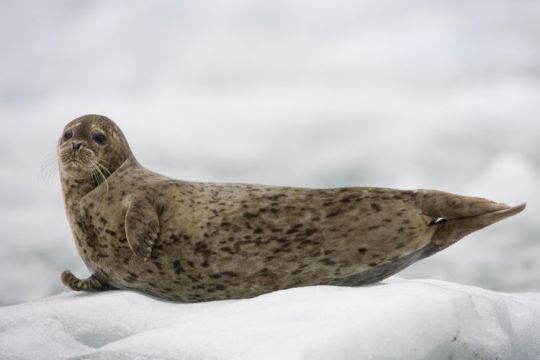

one of the biggest noticeable differences between seals and sea lions is the ears. sea lions have external ears, whereas seals just have an ear hole, which can sometimes be difficult to spot. here's a closer look:
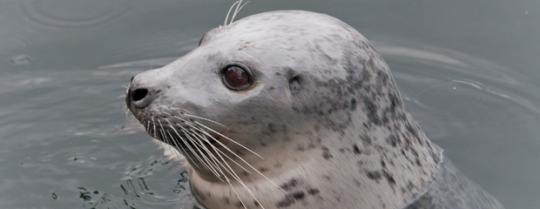
another big difference is their flippers! sea lions have longer front flippers than seals, and can also rotate their hind flippers and walk on them! seals can't do this, so on land they move in an ungainly, caterpillar-like motion called galumphing. this video of a seal release from the Cornish Seal Sanctuary will give you a good idea of what seals look like when they galumph.
youtube
kind of funny, right? don't let them fool you, though -- they can move pretty fast when they want to! these elephant seal bulls are galumphing so fast that their long noses (called proboscises) almost get in the way.
youtube
there are nearly 20 species of true seals, ranging in size from around 3.5 feet long (baikal seal) to 20 feet long (southern elephant seal). the largest seal on record was a southern elephant seal that was measured at 22.5 feet in 1913. (side note: if you have some spare time and a tape measure, and like me, you have trouble conceptualizing exactly how big this is, try measuring it out! i was a little terrified to find that this seal would have stretched from my apartment bedroom nearly all the way to the kitchen).
in conclusion, a seal is a strange and wonderful type of creature. seals are distinct from sea lions, and each species of seal is incredibly diverse and weird in its own way! here are a couple photos of these majestic beasts:

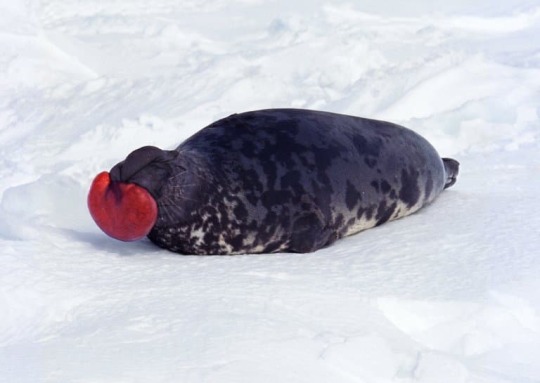




(images: baikal seal, hooded seal, grey seal, weddell seal, northern elephant seal, bearded seal)
7 notes
·
View notes
Text

two horses sharing a joint i did for artfight, blue rainbow horse belongs to @pinnipedia-art and grey horse is mine
13 notes
·
View notes
Photo

12 notes
·
View notes
